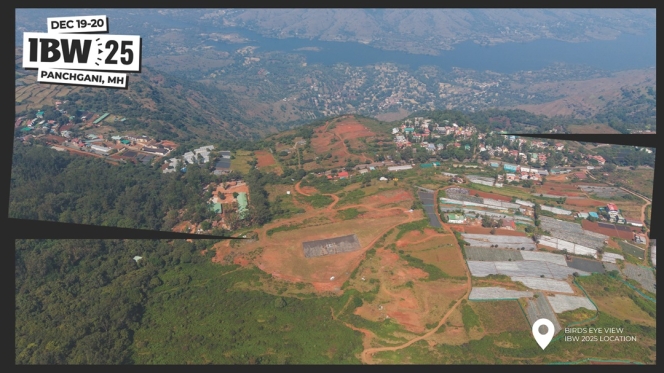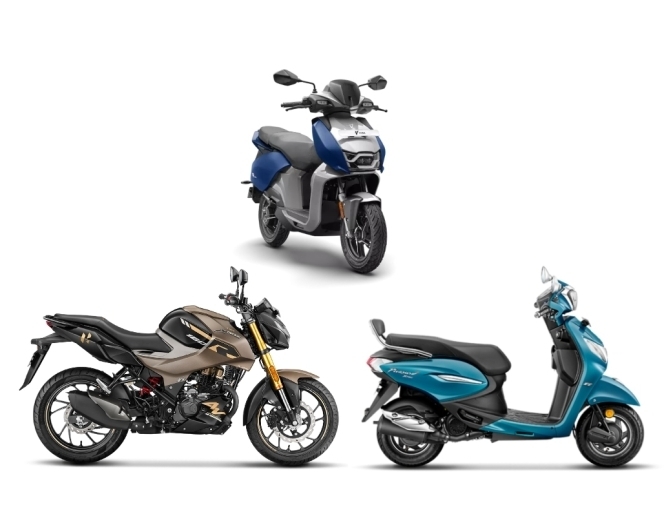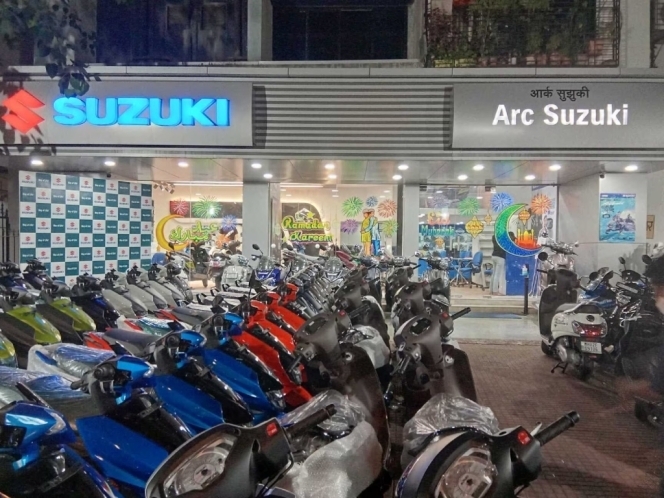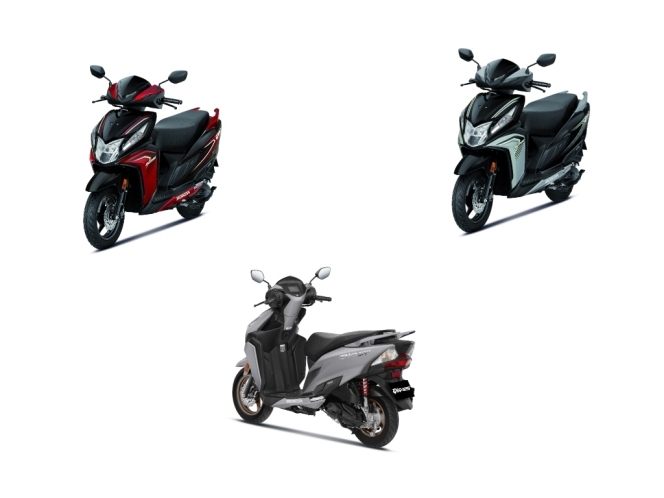
One look at the electric Kridn (pronounced Kree-Done, which in Sanskrit means ‘to play’) motorcycle and except for a box-like enclosure below the tank, there’s hardly anything unusual or exciting about it, in comparison to a conventional machine. The news of its export therefore does not click at once. Not, because it comes from a company that does not have a long legacy of automobile manufacture to boast of. A search about the company on the internet draws media reports, but the company website does not speak much about itself. It seems to speak more about the product rather than the company or its manufacturing infrastructure. A search concerning the company’s CEO, Gaurav Uppal, throws a Linkedin link. His previous ventures mark him as the co-founder of ‘Lets Score Soccer Stats’ app and then as the CEO of MapMyMeet iOS and Android App. This looks and sounds quite unlike how one would read the profile of Pawan Munjal, Managing Director, Hero MotoCorp, or that of Rajiv Bajaj, Managing Director, Bajaj Auto. Perhaps that is where the magic of automotive electrification comes into play. There is no need for a manufacturing legacy of two-wheelers or a position of fame in the two-wheeler industry to be producing an electric two-wheeler.
Coming under the spotlight sometime last year, Noida-based One Electric, it does not take long to figure out, is a start-up. Like Ola or a Zomato, it is sans any baggage that a legacy manufacturer would carry. Add to this equation the announcement to invade the African market and things start to settle down. As of now, One Electric has started exporting its Kridn electric motorcycle to Kenya. Against a backdrop where an estimated three million electric vehicles were sold the world over in comparison to an estimated 17,000 EVs sold in 2010, the ambition of One Electric to invade four other African markets begins to make sense. Priced at INR 1.25 lakh approximately, the Kridn is touted as the fastest electric motorcycle in India. It is claimed to be capable of a top speed of 95 kmph. Exported to Africa with an eye on the bike-taxi segment there (it is called as ‘Bodaboda’), the Kridn is promising a big change. Stacked against the Chinese, it is, according to Gaurav Uppal, offering the African bike-taxi buyers a sustainable, profitable and eco-friendly alternative to what they are currently using.
The ‘African’ proposal
Stating that the Kridn is designed for tough road conditions, heavy loading and high temperatures, Uppal averred that it is capable of fitting into the African transport system, which is motorcycle intensive. Of the opinion that the Kridn is capable of answering the needs of African, Indian and South American users, he informed that the robust build of the Kridn is complemented by its comfortable seats, metal body and high power-speed capability. Emphasising that this is conducive enough to replace the stock petrol motorcycles Africans are using, Uppal explained that the Kridn can swap batteries, offer superior power and speed qualities, and can withstand heavy loading despite the rough road conditions that prevail in Africa. Claiming to be the first electric two-wheeler company to invade the African market, One Electric is working towards becoming a serious player in the African markets. It is keen to leverage the Kridn’s battery swapping technology to ensure that the bike-taxi operators are able to honour their timelines. Bike-taxi services are highly time sensitive. The option of battery swapping provides a convenient alternative to operate an internal combustion engine powered bike.
Drawing attention to the electric motorcycle’s design and manufacturing process, Uppal said, “We have a complete in-house design, prototyping, development and production setup.” “We make our moulds and dies,” he added. The manufacturing process of One Electric is such that once a design is finalised, a 3D print-out is taken to check the fitment and alterations. Two or three iterations are a part. A pattern is made thereafter and plastic moulds are embarked upon. It is similar for metal parts manufacture, except there is no 3D printing resorted to. There are other technologies that One Electric employs. Agile enough to adapt and improvise a motorcycle design, according to Uppal, the company boasts of over 80 percent localisation. It uses high quality components to produce the Kridn and is working to achieve 100 percent localisation. Known to use a Honda frame for reference to built its own, One Electric is confident of achieving the goal.
About Kridn
To ensure a robust build, the chassis of the Kridn is said to be two-to-three kg heavier than those of similar motorcycles. It is built in-house along with parts like the battery, tank and speedometer. With stress on utility rather than a funky look, the Kridn employs seat, suspension, throttle and switches, lights and tyres that are sourced from leading suppliers in India. The seat, for example, is sourced from Meenakshi Polymers, the same company that supplies to Hero MotoCorp. The lights are said to be supplied by Fiem Industries, which also is a supplier to Harley-Davidson and Royal Enfield. The suspension is claimed to be sourced from Munjal Showa, which enjoys a supplier status with Hero MotoCorp as well. The quantity of supply by Munjal Showa to Hero MotoCorp per month is said to be no less than half a million bike-pieces per month! The tyres are sourced from Ceat.
With One Electric known to own an IP right for the design, fuel tank and battery box cover of the Kridn, the cells of the battery pack for the electric motorcycle are claimed to be imported as of now. The motor controller and the single brake component are also said to be currently imported. The Noida plant of One Electric has the capacity to produce 1,000 units per month. A bigger plant at Pune and Delhi-NCR will soon elevate the count to 10,000 units a month, quipped Uppal. “Expect that to happen in the next three-to-four months,” he added. Aggressively pursuing localisation, One Electric is claimed to have two provisional patents for a new type of motor which is being developed locally. The company is said to hold six-to-seven IPs. Focusing on B2B segment in India, the company, completing multiple last-mile delivery trials, has started receiving LOI's for a pan-India rollout. Insisting on a limited presence in the B2C segment, it is aiming at a first-year deployment of close to 10,000 units.
The road ahead
Stating that the company did not avail of government subsidies due to the lack of suitable drivetrains in India, Uppal mentioned, “The invitation from states for setting up a manufacturing unit has boosted our morale.With the petrol prices rising, electric vehicles have an opportunity to draw people to them. On charging infrastructure for electric vehicles, Uppal averred that the lack of space to comfortably park the vehicle and charge is proving to be a limitation. “This is giving rise to technologies like battery swapping,” he stated. Expecting battery swapping and charging stations to come up, the way ahead, according to Uppal, will be ‘fast charging’ battery swapping stations. Several startups are focusing on that too, he informed. Of the opinion that one battery pack in a vehicle should have enough capacity to last at least two days, Uppal averred that his company is working on a battery tech that could help achieve this goal. It is doing so for its B2C consumers. For the B2B consumers, it is developing a separate infrastructure all together, consisting of ready charging at certain points in the city.
Facing a disruption due to Covid-19 in the form of factory shutdown and supply chain issues, One Electric is working to invade the European and South American markets by 2022. “The South American market,” said Uppal, “is similar to the Indian and African market.” “The European market at the other end is about high cost and quality components, about performance and more,” he added. To focus on the brand of lithium cells for its European strategy, the company, in India, is currently pushing the Kridn through 25 dealerships across six states. (MT)
India Bike Week Shifts From Goa To Panchgani Hills For 2025 Edition
- By MT Bureau
- December 02, 2025

India Bike Week (IBW), presented by Gulf Syntrac, has shifted its 2025 venue from Goa to Panchgani, Maharashtra. The move, executed due to the rescheduling of Zilla Parishad elections in Goa to the IBW dates, means riders will now converge in the Deccan hills on 19th and 20th December 2025.
IBW 2025 will transform Panchgani into a high-altitude playground for riders, featuring new trails, cooler winds, bonfire nights, camping and after-parties. The edition promises IBW’s line-up yet, offering motorcycling experiences across multiple terrains – from hill climbs and mud trails to manufacturer-led road tests.
Martin Da Costa, Founder and CEO, Seventy Event Media Group, said, “As we celebrate 12 years of India Bike Week, it’s incredible to witness how this festival has grown into one of the world’s most spirited motorcycling gatherings. Although circumstances pushed us to shift venues this year, our ethos remains the same – community, adventure, and the freedom to explore. Panchgani offers us a fresh canvas and IBW 2025 is shaping up to be our most exciting edition yet.”
IBW’s 12th edition includes showcases such as the Endurance Stunt Show by Pol Tarres powered by Gulf Syntrac, the Wheelie Experience by Aprilia and India’s Test Ride Arena featuring the majority of India’s premium motorcycle line-up, now including a showcase by the Gulf TrackHouse MotoGP Team.
Over 10 riding experiences await, from the Pulsar Stunt School to a dedicated Kids’ Mini Moto Track by Vida’s Dirt-E K3, along with masterclasses led by expert creators and overlanders.
Competitive racing will feature on FMSCI-backed tracks such as the IBW Hill Climb by Reise Moto and Harley-Davidson Flat Track Race.
The Skoda Kodiaq All-Wheel Drive Track makes its debut, offering driving and off-road challenges.
Presented by Carlsberg Elephant Strong Soda, the festival’s music line-up includes performances by King, Karan Kanchan, Sugga Honey, along with Harley-Davidson Rock Riders’ Music featuring Antariksh.
The BIG TRIP presented by Gulf Syntrac returns with a compelling line-up. Twelve speakers – including global overlanding legends Simon & Lisa Thomas, Elspeth Beard, Zubin Jaafar and storytellers Kshitij Saxena, Gautham AG, Candida Louis and Maral Yazarloo – will bring narratives of grit, resilience and exploration.
The Ladakh Tent presented by Carlsberg Elephant Strong Soda hosts discussions, including ‘India on Two Wheels,’ a Storytellers Roundtable, ‘RTW 101,’ and ‘Women in Motorsports.’
The Jameson Connects Howling Dog space brings together creators, rider groups, and lifestyle influencers.
Hero MotoCorp Clocks 31% Sales Uptick In November Amid Continued Demand
- By MT Bureau
- December 02, 2025

Hero MotoCorp, the world’s largest manufacturer of motorcycles and scooters, registered dispatches of 604,490 units in November 2025, marking a 31 percent YoY growth.
In the domestic market, the company sold 570,520 two-wheelers, up 30 percent YoY, as against 439,777 units sold last year. On the exports front, the sales came at 33,970 units, as against 20,028 units, marking a 70 percent increase YoY.
This performance sustains the growth momentum following the festive season, driven by positive consumer sentiment across urban and rural markets, supported by GST benefits and a macroeconomic landscape.
VAHAN registrations showed strong domestic demand, with 886,330 units registered in November 2025. Retail registrations grew 26 percent to 1,882,739 units for the combined period of October and November 2025, reflecting dealership and consumer demand.
The company's performance was supported by the success of new models such as the Xtreme 125R, GlamourX 125, Destini 110, and Xoom 160.
VIDA, powered by Hero, sustained its growth trajectory with 12,199 VAHAN registrations, reflecting a 66 percent growth compared to the same period last year. The company strengthened its position in the EV sector, capturing a 10.4 percent market share. The VIDA Evooter VX2 continued to drive retail growth and sales volume, and the company also expanded the line-up with the VX2 Go 3.4 kWh variant.
Suzuki Motorcycle India Sells 122,300 Units In November 2025
- By MT Bureau
- December 01, 2025

Suzuki Motorcycle India (SMIPL), the two-wheeler subsidiary of Suzuki Motor Corporation, Japan, has announced its sales performance for November 2025, recording total sales of 122,300 units. This marks a strong 30 percent YoY growth over 94,370 units sold in November 2024.
In the domestic market, the sales touched 96,360 units last month, which was 23 percent growth over 78,333 units a year ago.
On the exports front, sales grew 62 percent reaching 25,940 units in November, up from 16,037 last year.
Additionally, SMIPL’s aftersales business continued gaining momentum with spare parts sales of INR 955 million in November.
Deepak Mutreja, Vice-President – Sales & Marketing, Suzuki Motorcycle India, said, “We are grateful for the growing confidence our customers place in Suzuki. Their support, along with the dedicated efforts of our dealer network, continues to drive our growth. Alongside strengthening our presence, we are also expanding customer engagement initiatives and experience-led programs to bring riders closer to the brand. We will continue to invest in enhancing accessibility, after-sales experience, and community-building as we work towards sustained growth.”
Honda Motorcycle & Scooter India Clocks 25% Sales Growth In November
- By MT Bureau
- December 01, 2025

Honda Motorcycle & Scooter India (HMSI), one of the leading two-wheeler manufacturers in the country, has reported wholesales of 591,136 units in November 2025, up 25 percent YoY.
The total sales figure for the month included 533,645 units in domestic sales and 57,491 units in exports.
During the period, the automaker continued its commitment towards road safety by organising awareness campaigns across various cities nationwide, encouraging responsible road behaviour through interactive learning.
HMSI also celebrated Children’s Month with a Kids Carnival across all its manufacturing facilities, Traffic Training Parks (TTPs), and Safety Driving Education Centers (SDECs). The initiative, themed ‘Safety Explorers: Journey Through Traffic Land,’ aimed to make road safety learning engaging for children while promoting safe habits from an early age.






Comments (0)
ADD COMMENT